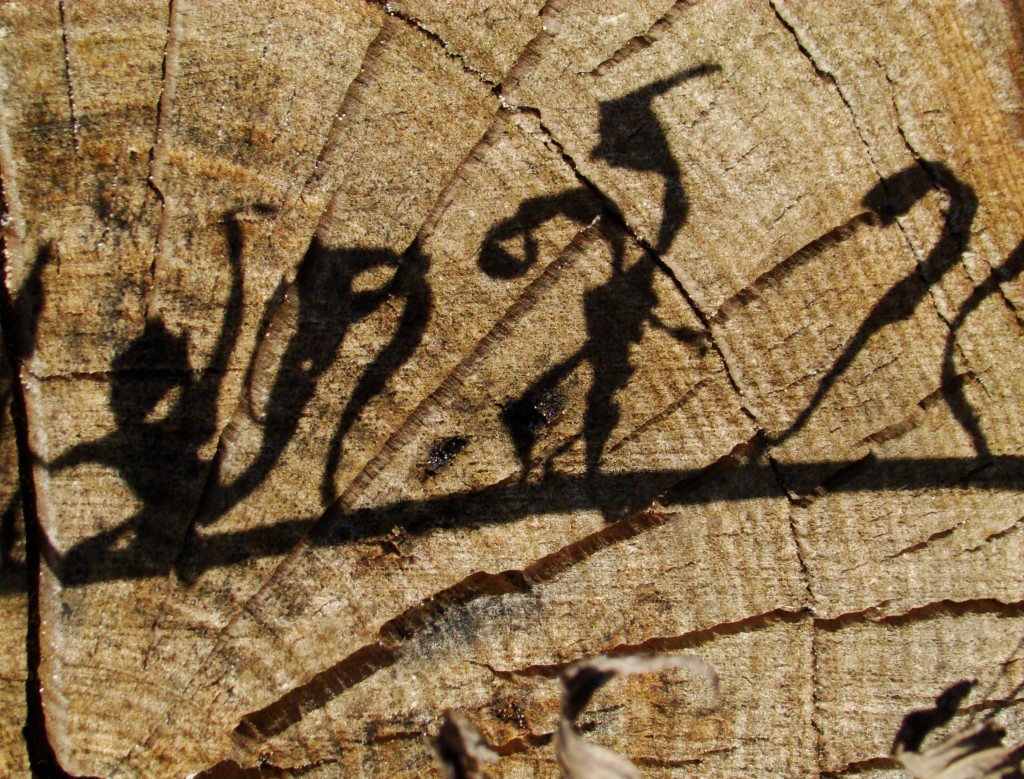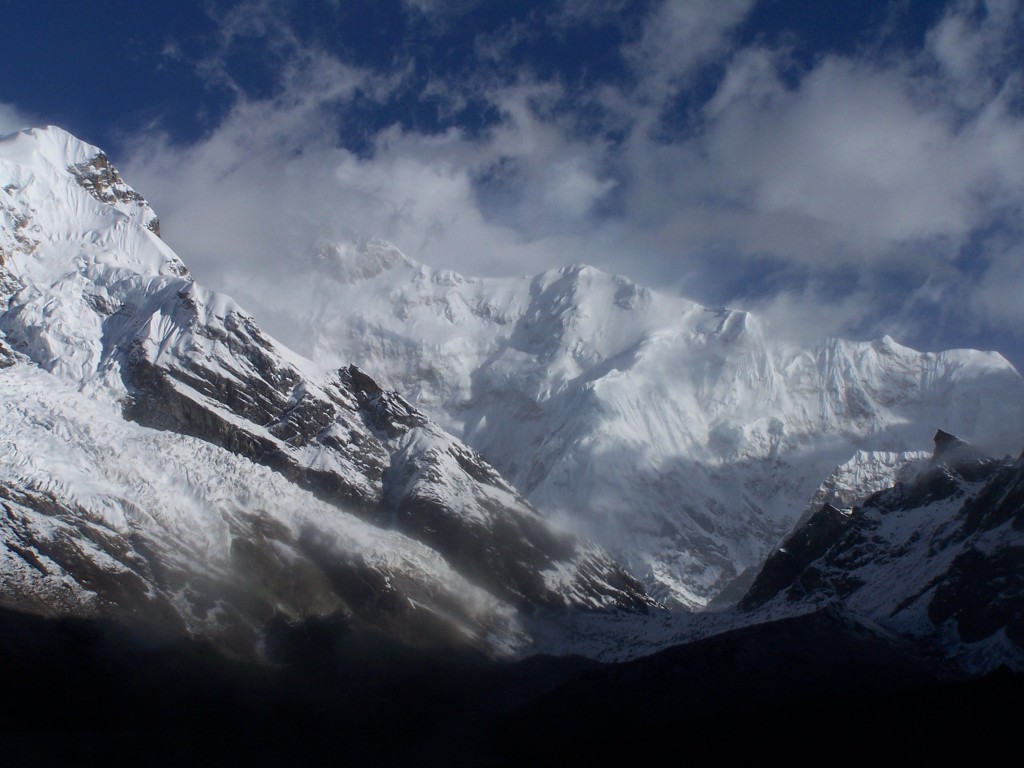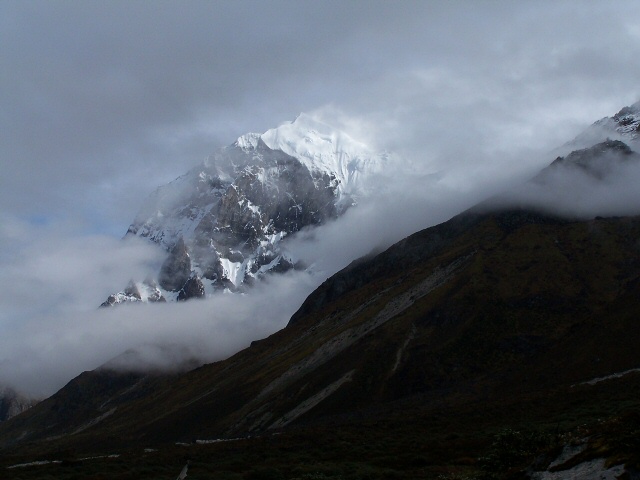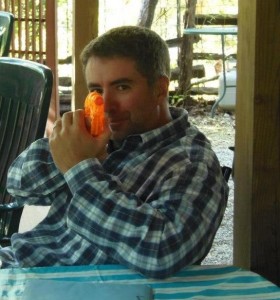 Paul Pines
Paul Pines
 Yggdrasil
Yggdrasil
Probative Values
The future of High Culture in today’s world is a daunting question, assuming there is a definition that we can agree upon. One might well ask if High Culture even exists. And if it exists, where do we find it? Perhaps in the historical consensus of universally valued products like Phidias’ 5th Century BCE statue of Athena Parthenos, the poetry of Li Po who died in 762 supposedly trying to embrace the moon in the Yellow River, Vermeer’s “Girl with a Pearl Earring,” painted in 1665, or Mozart’s “Requiem Mass in D minor,” in 1795. There are the obvious venues of High Culture such as the Metropolitan Opera at Lincoln Center offering “La Boehme,” or The Getty Museum in Brentwood displaying a restored Jackson Pollock, “Mural,” commissioned by Peggy Guggenheim in 1943. Then there is the anti-elitist vision expressed by Matthew Arnold in his 1875 essay, “Culture and Anarchy,” as that which makes “the best that has been thought and known in the world current everywhere.” All of it buckles under the weight of changes in the last century that make it unclear what High Culture looks like, or how it functions. We may, like young Parsifal in the spectral castle known as Mount Sauvage, ask the wounded Fisher King: Who does the Grail serve?
Wolfram von Eschenbach’s Parsifal searches for the grail in a Waste Land devastated by war. Nathanael West’s novel, Miss Lonelyhearts, written in 1933, describes just such a landscape stripped bare of traditions, symbols and long held beliefs that once provided comfort and civility. Standing in the Waste Land of a Civil War field hospital, Walt Whitman wondered what had become of the grail he’d called “democracy”, and soon after wrote that we might be growing “an expanding material body with no soul.” For Whitman, as for West’s wounded Miss. L., soul loss is an abiding wound that can only be healed by the poetic imagination.
Whitman declared the poet as shaman, able to call forth the vision to unite a culturally diverse nation. Only the poetic imagination could forge this connection, give birth to a High Culture that would water the flowering tree at the center of our garden. There is evidence that the symbols of this idea have been buried in the relativist trope of Post Modernism and the expanding web of electronic media. Ominous clues suggest that poetic imagination has been reduced to a retail commodity in the global economy. High Culture, subject to a rate of change equivalent to that of the G-force that pulls space craft loose from gravity, may be unrecognizable.
 Neolithic Spirals — Maria Gimbutas, Language of the Goddess
Neolithic Spirals — Maria Gimbutas, Language of the Goddess
.
Starting at the Centre
…he drew a circle on the face of the deep…Proverbs 8:27
In considering the plight of High Culture in our time, it may be helpful to examine its roots. Around 8,000 BCE patterns appear on Paleolithic vessels from the Great Mother Culture representing forms of energies, i.e. the chevron (bird), waves (water/frequency), swastika (wheel of life in motion), and the most basic orienting symbol of all—the circle traversed by four lines converging at its center: the circle-squared. Visible in this structure is the paradox of stillness (center) and motion (periphery) and basic orienting division into four starting with the four directions, four seasons, and four phases of life. The center still point, axis mundi, is often depicted as a tree with roots below and branches above. Energies flow from upper and lower worlds through the nexus where time meets eternity to animate the material world.
This paradigm can be found in Plato, the Egyptian Night Sea journey of Osiris, Sioux Medicine Wheel teaching and indigenous Central American cultures. Most often the center is anchored by a tree, the Mayan Tree of Life, the Kabbalist’s Yesod and the Norse Yiggdrasil. In these systems the dark world at the root works in tandem with branches flowering in the light. Where the center holds, masculine and feminine, the whole congress of opposites work to form the unus mundus, one world composed of many parts.
In Vedic discipline the world-tree is the spinal column rooted in the pelvic chackras rising through the heart chakra to an opening between the eyes through which the soul-bird is released at death. The snake and the bird inhabited the Tree at the center of Inanna’s Sumerian garden as early as 4,000 BCE. Quetzalcoatl, the snake-bird, was equally at home in the roots and branches of the Aztec/Mayan World Tree in 1511 AD when the Spanish first cruised past the gleaming towers of Tulum. It is interesting to note that the soul’s double-nature carries the morphic resonance of the biological link between snake and bird.
The most complex form of the circle-squared is the mandala common to Navajo, Ancient Egyptian, Cretan, Jewish, Druidic, Roman, Christian, Indian, Aboriginal and Tibetan cultures. A Chinese alchemical text, The Secret of the Golden Flower, translated by Richard Wilhelm, speaks of a Golden Flower (lotus), four petals rising from the center. Psychologist Carl Jung recognized in it his own mandalic structure, the flowering of the individuated Self/Soul. Nomadic groups in Paleolithic Europe or the buffalo rich Native American Plains left little physical evidence of advanced civilization, but poetic imagination abounds in the symbols on Venus figures and exploits of Coyote of oral tradition: the metaphysical system of the circle squared may well be an Ur-product of High Culture.
 Aztec Serpent Wheel
Aztec Serpent Wheel
.
The Original Vision
And I say the sacred hoop of my people was one of the many hoops
that made one circle, wide as daylight and as starlight,
and in the center grew one mighty flowering tree to
shelter all the children of one mother and one father.
Black Elk Speaks, J.G. Neihardt.
Oglala Sioux shaman Black Elk, cousin of Crazy Horse, had a Great Vision as an eleven year old while deep in an illness those around him thought he wouldn’t survive. During this time he was taken to the center of the world he saw “with the sacred eye” his nation as one of many sacred hoops. The year was 1874. Wasichu were passing through Sioux land on their way to the gold fields. He was given power-gifts to save the flowering tree at the center of his nation. Fifty-one years after the battle of Wounded Knee, that sounded the death knell of his people, Black Elk agreed to share his Great Vision with ethnologist J.G. Neihardt, who found the old man at the rear of a squalid reservation. He had lived the last two-thirds of his life there lamenting his failure. In spite of his efforts, the tree had died. But as the end approached, he thought his Great Vision might instruct others, its truth find a way back into the world.
After all, his hoop was one of many. He saw that when the tree dies, the center is lost. When a center is lost, it is buried and must be renewed. Black Elk’s cry to the Grandfathers at the end of his life echoes those other visionaries for the loss of their cultures: the buried Merlin’s grief for Camelot echoes through the wood, Ezekiel weeps for Jerusalem, Aztec poet Netzahualcoyotl
(Hungry Coyote) who appears on the Mexican 100 peso note, divines as the bearer of High Culture: The smoking stars gather against it; the one who cares for flowers is about to be destroyed.
 The World Clock: Wolfgang Pauli, the Nobel laureate physicist saw in a dream this image that came to be known as Pauli’s world clock. It is a multi-tiered mandala similar to the circle squared where a vertical and a horizontal circle share a common centre. Pauli and C.G. Jung suggested the image supported their intuition of a unified psychophysical reality that interfaced with individual consciousness.
The World Clock: Wolfgang Pauli, the Nobel laureate physicist saw in a dream this image that came to be known as Pauli’s world clock. It is a multi-tiered mandala similar to the circle squared where a vertical and a horizontal circle share a common centre. Pauli and C.G. Jung suggested the image supported their intuition of a unified psychophysical reality that interfaced with individual consciousness.
T
Ralph Loves Walt
Thirty years before Black Elk received his Great Vision, Ralph Waldo Emerson wrote his essay, “The Poet”, calling for “one with tyrannous eye” to unite “Our logrolling, our stumps and their politics, our fisheries, our Negroes, and Indians, our boasts, and our repudiations, the wrath of rogues, and the pusillanimity of honest men, the northern trade, the southern planting, the western clearing, Oregon, and Texas…” He promised that poet, “Thou shalt have the whole land for thy park and manor…”
Implied in his call was the fear that without poetic imagination the culture would fall apart. Ten years later Walt Whitman sent Emerson the first edition of Leaves of Grass. In the introduction he stated: “The soul of the largest and wealthiest and proudest nation may well go half-way to meet that of its poets.” Whitman articulated a version of democracy in which our very atoms resonate, but enjoined us also to prize individuality—a High Culture built on poetic imagination, its ability to integrate as well as renew experience.
Later this vision, like Black Elk’s, dimmed.
The nation divided by Civil War left its youth for dead in heaps, and shuffled others into make-shift tents. Whitman threaded his way through the fetid field hospitals of D.C. nursing the boys he loved, navigating their corpses, lost limbs, buckets of blood swinging from broom handles; his optimism darkened. It may have been with a touch of PTSD that he wrote in his late essay, “Democratic Vistas,” dated 1871, of the failure of poetic imagination to take hold, and the withering flower at the center of his hoop: “…with unprecedented material advancement–Society in these States is canker’d, crude, surreptitious, superstitious and rotten…I say we best look our times and land searchingly in the face, like a physician diagnosing some deep disease…It is as if we were being endowed with a vast and more thoroughly appointed body, then left with little or no soul…
 Navajo Sand Painting
Navajo Sand Painting
.
The Centre Cannot Hold
Black Elk lived from 1863 to 1949, from the buffalo-rich open prairie to the post Holocaust reality in the wake of WWII. Even so, he held on to the core of his Great Vision. Prior to the 20th Century, the circle-squared archetype of wholeness passed easily from one civilization to the next until it hit a hard edge mid-way through Modernism, and broke. Cracks had appeared at the dawn of the 19th Century, but went largely unobserved.
In 1807, Georg Wilhelm Friedrich Hegel published his theory of Geist in his Phenomenology of Spirit. His idea of Geist, translated as “spirit” or “mind,” is essentially an examination of consciousness. The consciousness in question is a collective one realizing itself over time through the philosophical work of individuals starting with Heraclitus and culminating in Hegel, who posited that the history of philosophical enquiry ended with him; from that point forward consciousness didn’t so much unfold as contained absolute knowledge. This was cause for celebration in the Hegel household. He had secured the Paleolithic/Platonic ontological center of the circle squared. That’s when cracks appeared in the saucer of Hegel’s teacup. Something dark began to shimmer in the wings of the departing century: the swan-song of the Victorian age. Nietzsche, Freud and Marx danced onto center stage in bow ties and patent leather shoes. Billed on the marquee as The Hermeneutics of Suspicion, they declared that nothing is what it appears to be; all received wisdom and articles of faith must be regarded with suspicion.
By mid-century, philosophy no longer addressed general questions about the human condition, but cracks into numerous specialties each in search of a foundation. The dervishes of Post Modernism, chief among them two Jacques, Lacan and Derrida summed it up. Lacan called The Real “the impossible.” Derrida thought any inquiry outside the limitations of language unthinkable, and everything inside of it only spin.
..
The Crack Up
The Great Depression confirmed for many that there was nothing of substance at the center. A few grieved the demise of High Culture. F. Scott Fitzgerald and Nathaniel West wailed in the 1930s Waste Land. West wrote Miss Lonelyhearts as a night clerk at the Hotel Albert in Greenwich Village, and then at the Hotel Kenmore on 23rd Street. From his desk at the latter, looking out on a second floor terrace, he watched bankrupt millionaires fall from the top floor, “lovers leap.” He observed that in the absence of a center, pain can’t be addressed. The result was a culture of cruelty and disconnection. His novel follows a sports journalist reassigned by a sadistic editor to the Advice Desk where he answered letters from the heartbroken as “Miss. L”. His attempt to take on the burden of the suffering humanity fails. Miss L. experienced a psychotic breakdown rather than what at an earlier time might’ve been mystical union or a redemptive renewal of faith.
West never made a penny on his novels. He moved to Hollywood in 1935. He met F. Scott Fitzgerald on the lot of Republic Pictures, aka Repulsive Pictures, where the major stars were singing cowboys. Fitzgerald’s royalties plummeted to $50 in 1933 from an earlier high of $29,757.85. The author who once defined The Jazz Age, now analogized himself and the world in which he found himself to a cracked plate. It might be glued and used, but would always be a cracked plate, not suitable for company. In essays for Esquire published posthumously as the Crack Up in 1940 by Edmund Wilson, Fitzgerald wrote about the death of High Culture. The novel, which he’d thought “the most powerful medium of conveying thought and feeling from one human being to another,” had become “subordinate to a mechanical and communal art…capable of only the tritest thought, the most obvious emotion.” Poetic imagination had given way to Hollywood, a collaborative medium which fed on the obvious.
In West’s Hollywood novel, The Day of the Locust, the “dream machine” fabricated and recycled virtual realities for financial gain. Its illusions were paper thin, but addictive. The novel ends with an apocalyptic riot; a panicked crowd covers the land like locusts driven by a viral hunger to consume their own medium. Fitzgerald and West became fast friends. One day after news of Fitzgerald’s death reaches him, West collided with another car. He and his wife, Eileen, returning from a hunting trip in Mexico, were killed. West is thirty-seven.
 Axis Mundi — LDS anarchy website
Axis Mundi — LDS anarchy website
.
Chinatown Chicken
As a young man in search of a center, I engaged in numerous addictions, but none so telling as one in Chinatown. The object of my hunger for The Real, which Lacan labeled “the impossible”, was a chicken. Not the edible kind, baked in clay or shredded with almonds and bean sprouts, but a live fowl, occupant of a glass case mounted on a platform in an arcade south of Canal Street.
The challenge overhead read: BEAT THE BIRD.
No one ever beat the chicken at its own game: tic-tac-toe.
A quarter in the slot, and the game was on. A board at the base marked each move with an illuminated X or O. The chicken didn’t have to see it. His attention was on the pellet that dropped into one of several dishes to prompt his next move. The whole affair was run by wires and electrical connections to which the player became attached as an input in an otherwise selforganizing system. It didn’t really matter who performed that function.
It was not simply passive pleasure that held me, but the hunger that drove West’s substance starved movie audience to swarm like locusts. I became infected by the inevitability of defeat, but couldn’t stop hitting keys, a glimpse of the addiction that would later wire me to Facebook. Years later teaching an essay, “The Moral Equivalent of War,” I asked my American Literature class at a small college in the Adirondacks if they agreed with William James that “the pleasure culture” posed a greater danger to us than the “warrior” culture. Facing the fear of death-in-battle deepened those who survived it. Entertainment and entitlement in pursuit of pleasure offered only endless adolescence. James suggested that we find moral equivalents for those rites which made men of boys, but without the violence of warfare.
Was my attachment to the tic-tac-toe chicken an early immersion in pleasure culture, or a moral equivalent worthy of a warrior?
There was no contest; the chicken always won!
But I succumbed to the addictive thrill of punching the buttons to watch the chicken dance in front of the feeding tray. Who does the Grail serve?
What would William James say? I see him as a young man who feels like a failure and suffers a nervous breakdown. No warrior, he pays for another man to face the rebel yells in his stead, and most likely die. Older, at his desk, scruffy beard starting to grey, he sniffs ammonium nitrate from a beaker, giggling as he makes notes for an article, “Consciousness Under Nitrous Oxide,” in the Psychological Review (1898). High Culture gives way to getting high, William James, in pursuit of altered consciousness, uses an anesthetic gas. Foldedin the chemical hilarity, James writes:
Good and evil reconciled in a laugh!
It escapes, it escapes!
But–
What escapes, WHAT escapes?
 Integra Natura—The Whole of Nature (1671) – Robert Fludd physician, alchemist, philosopher and artist depicts in this engraving the correspondence between realms linked in the Great Chain of Being by the World Soul, Anima Mundi. From his two volume masterwork Ultriusque Cosmi.
Integra Natura—The Whole of Nature (1671) – Robert Fludd physician, alchemist, philosopher and artist depicts in this engraving the correspondence between realms linked in the Great Chain of Being by the World Soul, Anima Mundi. From his two volume masterwork Ultriusque Cosmi.
.
Numbness and the Mediated World
Here is a conversation recently overheard between two girls at Starbucks in NYC.
GIRL 1: I mean…it’s like he doesn’t even care.
GIRL 2: Why do you think that?
GIRL 1: I posted something super nice about him on Facebook and he never liked it!
GIRL 2: When did you post it?
GIRL 1: Like…an hour ago.
GIRL 2: Oh, that’s serious!!
Thomas de Zengotita’s “Numbing of the American Mind, Culture as Anesthetic,” (Harper’s, 4/02) captures the ironic relationship of stimulation to numbness. It opens with a quote by Nietzsche: …the massive influx of impressions is so great; surprising, barbaric, and violent things press so overpoweringly–balled up into hideous clumps–in the youthful soul; that it can save itself only by taking recourse in premeditated stupidity. The philosopher isn’t referring to I.Q., but to being anesthetized. “Ever notice how, when your hand is numb, everything feels thin?” asks Zengotita. “Even a solid block of wood lacks depth and texture. You can’t feel the wood; your limb just encounters the interrupting surface. Well, numb is to the soul as thin is to a mediated world.”
His point is hiding in plain sight: the effect of constant stimulation is numbness. The absence of sensation is not linked to sense-deprivation, but to excessive input of shifting images and messages claiming our attention. The excitation is numbing. When the surface becomes all there is to life, stress is “how reality feels.”
Post Modernists assert we live in closed, self-referential systems such as language, culture, identity, politics—constructions of the moment. We can’t claim to live in reality, only our representation of it. Derrida insists that there is nothing outside the text, but more text, which we create to describe the purport of our text.
What happens when the soul turns numb and poetic imagination goes underground? What difference does it make if our children are fed packaged imagery designed to sell product but leave their inner worlds atrophied? Why should we care if there is no perceived difference between news and entertainment, advertising and information, Vivaldi and Kenny G.
 Nezahuacoyotl Peso
Nezahuacoyotl Peso
.
The Submerged Centre
There rises an unspeakable desire
After the knowledge of our buried life;
A thirst to spend our fire and restless force
In tracking out our true, original course…
—Matthew Arnold, “The Buried Life”
It may be impossible to endure the crushing G-Force, that propulsive rate of change, without a degree of protective numbness. At the same time, the structure of the psyche remains the same since it gave birth to Paleolithic images on cave walls. Symbols rising spontaneously from its depth inform and guide us. Polymath anthropologist George Gregory Bateson tells us that the ordering process of self-organizing systems is not imposed by the environment but established within the system itself. Two dynamic principles are at work here: self-renewal and selftranscendence–the ability to reach beyond physical and mental boundaries in the process of learning, development and evolution. A system that becomes stressed—read here “numb” or “stupid”—will become rigid and unable to adapt, connect to its own symbols, and hear its inner voice.
Socrates called his inner voice the daemon. Romans, the genius. Native Americans, the Spirit Guide. Mayans know it as the Nahual. In analytical psychology it is the Self or Objective Psyche. In a study of destiny, The Soul’s Code, James Hillman refers to Plato’s myth of Er, in The Republic. Er returns from a near death experience to describe the protocol of returning souls. Before crossing to the re-birth destination, each soul witnesses the Fates spin, weave and cut the cloth of its destiny. The soul knows the unique pattern before it drinks from Lethe. Some drink more deeply than others. Those who hears the spirit guide whisper in its ear, are said to be touched by Genius, the submerged center.
This is another way to describe poetic imagination and its ability to give birth to works that constitute High Culture. Poetic imagination rises from the same intelligence that conveys information about the destiny of individuals and civilizations. Even unheard, at times when the center collapses, the Genius speaks, seeks a way to break the surface of numbness and denial. William James curiosity about altered consciousness, including his love affair with Nitrous Oxide, can be viewed as a search for the pharmakon, that remedy mentioned by Plato which is both cure and disease. It can be argued that those most in touch with poetic imagination in the last century were scientists, not poets.
 Sacred Script: Catalog of signs collected by Marija Gimbutas, showing core signs at left and derivatives at right formed by additional dots, lines, curves or alternate orientations; from her ground breaking work, The Civilization of the Goddess.
Sacred Script: Catalog of signs collected by Marija Gimbutas, showing core signs at left and derivatives at right formed by additional dots, lines, curves or alternate orientations; from her ground breaking work, The Civilization of the Goddess.
.
Albert Einstein’s imaginative “thought experiment” in 1905, working in the Swiss Patent Office, led to his theory of special relativity. Using poetic imagination, Einstein was able to formulate the behavior of movement at the speed of light when time falls away. Later, he would write in his essay, On Science: “Imagination is more important than knowledge.”
Depth psychologist Carl Jung asserted that imagination and its products must be understood as facts. Jung worked with quantum visionary Wolfgang Pauli to explore the phenomena of meaningful coincidence, which Jung called synchronicity, and Pauli non-local causality. They published a paper together in 1952, “The Interpretation of Nature and the Psyche,” concluded that “the observed patterns of matter are reflections of patterns of mind.”
But the question remains, how can we discern the voice of poetic imagination, rooted in the archetype of wholeness, through the numbness of surface stimulation?
 Mandala Of Vajrahdatu
Mandala Of Vajrahdatu
.
The Face of the Deep
“My core fear,” writes Sven Birkerts in The Guttenberg Elegies, “is that we are as a culture, as a species, becoming shallower; that we have turned from depth…and are adapting ourselves to the ersatz security of a vast lateral connectedness. That we are giving up on wisdom, the struggle for which has for millennia been central to the very idea of culture…” Birkets views the changes to our world, (and our psyches), as a Faustian trade-off.
Cyber-technology promises mastery of time and space, the ability to make love to a virtual Helen or Hercules, circumnavigate the globe in a heartbeat, and access financial markets at a key stroke. The reality is that we are trapped in an “electric tribalism” where individual development is not a goal but an impediment. Instead are offered superhuman avatars, but exist as insects stuck in a web, or as Birkerts would have it, bees glued to a hive. He may have reason to fear the hive mentality and it consequences for depth of any kind. For example, the most frequent and celebrated activity on Facebook is the ritual changing of the Profile Picture. Two recent examples of this drifted through my timeline this morning.
Which 80s Superstar are you?
Which mystical creature are you?
Two “friends” linked to me by the wireless network for no apparent reason but that we share the technology, responded to these challenging questions with answers applauded by each of their networks first separately and then on a “share”, together:
Madonna (w/photo), responded one.
A Fairy (Tinkerbelle), declared another.
My “profile picture” of choice belongs to Sri Ramana Maharshi on the cover of his collected works published in the early 60s. When I first opened the book years ago I was stunned by its simplicity the teaching. The man in a loincloth with a trimmed grey beard lean body curved slightly like a question mark broached this call and response.
Maharshi posed what philosophers today would call a foundational question: Who am I? He then instructs the student to answer: “Who is asking the question?” This may fairly characterize the sum total of the teaching.
Who is asking? He persists.
I repeat this over and over to myself, going deeper with each repetition. Eventually one understands: Who am I? is not a question.
Who breaks the surface by asking Who.
Who delivers the intelligence that draws on personal and collective fields.
Who messages in dreams, epiphany, and the shaman’s visionary consciousness.
Who pre-exists language and can’t be deconstructed, embedded in the structure of the psyche.
Who rises from the submerged center.
Who hosts the poetic imagination, and interfaces with the informational field that holds all forms in potential?
Who in the psyche that knows the knower.
Who looks back at me through my eyes but remains unseen.
 Tree of Life geometry
Tree of Life geometry
.
The Problems of High Culture
There are many ways to understand the term High Culture. On the most obvious level it is a privileged procession of products agreed upon by consensus, i.e. Michelangelo’s paintings on the roof of the Sistine Chapel, which he did under protest; on another level, self-selecting groups of esthetes may admire carved duck decoys or Faberge Eggs. Those whose products are deemed worthy of High Culture might often be more at home in the Cedar Bar than on Park Avenue, while the reverse may be true of those who consume those products to verify their status. Then there is the culture of improvisation that takes place in smoke filled rooms, street theater, subway mimes. For example, French composer Darius Milhaud, foremost among the Les Six, disembarked in New York and went directly to Harlem instead of Carnegie Hall, to hear authentic jazz, arguably the only high art form created on this continent. We are familiar with High Culture Enshrined, but what about the numinous moments that pass and are gone, High Culture In Time? About which Thelonious Monk said: “If you’re not there, you miss it all.” Perhaps there is a working definition that connects them.
High Culture: that which connects us to the submerged center, conduit for poetic imagination, moves people beyond numbness, dumbness, violence and blind belief, absorbs pain that is otherwise not addressable—and suggests something permanent in the midst of impermanence.
Does such a thing exist?
And what becomes of a Rothko painting once it appears as a postage stamp?
High Culture may slumber like Schrodinger’s cat closed in a box that regarded from the superposition suggested by complementarity is both alive and dead.
As we move forward, it is important to understand the proof that haunts our dreams, the archetypes of totality, refrain of oracles and sages, often using the same words.
Empedocles: “The nature of God is a circle of which the center is everywhere and the circumference nowhere.”
Timaeus of Locris (via Plato): “A circle whose center is everywhere and circumference nowhere.”The Timaeus
Hermes Trismegistus: “God is an infinite sphere, the center of which is everywhere, the circumference nowhere.” Book of the 24 Philosophers.
Alain of Lille: “God is an intelligible sphere whose center is everywhere and whose circumference is nowhere.”
Nicola of Cusa: “Your eye is a circle—or better, an infinite sphere—sees—all things at once.” De Visioni Dei
Hildegard of Bingen: “In its workings the Godhead is like a wheel, a whole.”
Voltaire: “God is a circle whose center is everywhere and circumference nowhere.” The Philosophical Dictionary
Blaise Pascal: Nature is an infinite sphere whose center is everywhere and circumference nowhere” (Pensees #199 in Penguin tr.)
It’s as if we all woke up from the same dream!
Or were enfolded in it.
We thirst for that long draught of what Mircea Eliade calls a thirst for the experience of being, the ontological soul-bath. If in this metaphor God/Self/Genius is understood as the center of consciousness, that circle of wholeness in the depths of our psychic field, is everywhere, then it can be accessed wherever we find ourselves. The voice from the submerged center calls to us,
“Drop your bucket anywhere and pull up sweet water. Break the surface and be healed.”
 Buddhist Wheel of Life
Buddhist Wheel of Life
.
Damage Report
In The Guttenberg Elegies, Sven Birkerts opines that electronic media destabilizes “our entire collective subjective history;” reduces our capacity for “inwardness,” and repeats William James’ warning. The “pleasure culture” has given birth to the “hive mentality,” a form of mindless collectivity. Absent a concrete center, Birkerts sees every dissolving digital byte as a “metaphor for chaos.” The energies of eternity flowing into time have gone underground, along with historical memory.
Until recently, the cultivation of memory has been central to education. Simonides handed down his memory system in the 5th Century BCE after the roof caved on friends at dinner while he was standing outside. The bodies couldn’t be recovered but he found a way to recall who was there by remembering where each friend was sitting. Cicero’s memory system linking things to remember with rooms in his villa was used by Renaissance luminaries like Ficino, Picus, Campenella, and Giordano Bruno. In the 16th Century Guilio Camillo built his Theater of Memory to contain the entire history of man.
One might observe without hyperbole that memory is the guardian of meaning. There is no High Culture without it. Unfortunately, memory has been a prime casualty of the pleasure culture and hive mentality. We can access endless information at a keystroke, but ignore the scaffolds for memory to support a coherent vision of events and ideas. Abjured in the schools, memory has become a fatality of impact and speed. We entered the 20th Century on horseback and exited with the first man on the moon. At that speed, a collision of Historical Memory with the Virtual Present is both inevitable and catastrophic.
No doubt the accident took place on a difficult merge. According to the report, Virtual Present did not give way. Historical Memory was forced to pull into oncoming traffic. Witnesses fled the scene. Most severely injured, High Culture was rushed to the ER, admitted after a long wait, and then placed in ICU.
There are no clear directives, no Proxy Power of Attorney, DNR or Organ Donor plans. The court may have to appoint a Medical Guardian. Fortunately, the vitals have stabilized and High Culture, uncovered by private insurance, was moved into a public ward. It is however resting comfortably, hooked up to IVs and monitors charting oxygen levels, heart rate and BP.
There’s been discussion of rehab, but it’s premature.
The speculation is that High Culture may continue to exist, but more as an idea within the virtual body of ideas, rather than as a direct experience
 Maya World Tree
Maya World Tree
.
Summing Up: The Pharmakon
Plato talks about the pharmakon as both a remedy and a poison. It is the cure in the disease and the disease in the cure. That medicine had a double nature was well known to Galen and Asclepius as well as Paracelsus and Derrida. The pharmakon may be the Objective Psyche or the submerged center. By the same token Post Modernism, with its claim of absolute relativism married to Faustian promise of technology and instant information may be the poison in which the panacea is secreted. Caught between the dreams of virtuality and globalization, a wounded poetic imagination bombarded by packaged images for consumption, symbols replaced by brands, we must not retreat in grief and anger, or to easy answers. In her exploration of centrality, Dreams of Totality, Sherry Salman warns us that where the old symbols no longer hold and new ones have yet to emerge, we must be wary of “the pull toward passive or righteous identification with either utopian faith or dystopian demise.” If we hold the questions in our consciousness, the submerged center, Genius, Objective Psyche will in its own time yield answers, give birth to new symbols. Beyond that, the sense of helplessness and fragmentation is inevitable.
“We know that in order for new dreams of totality to emerge,” Salman continues, “the old ones have to be broken, and that this happens at the point of weak links, where disenfranchised elements create the tension. Stay near this edge between order and disorder. Have empathy for what’s dying and being born.”
What is the future of High Culture in the world as we now know it? Where is a credible center, or conduit for poetic imagination? We may well ask again, like Parsifal, “Whom does the Grail serve?”
What lies ahead may be taking shape in us even as we question its existence.
The Genius whispers, “This way.”
— Paul Pines
.
Bibliography
ACZEL, D. Amir, Entanglement, The Greatest Mystery in Physics, New York: Four Walls Eight Windows, 2001
BATESON, G. (1979). Mind and Nature: A Necessary Unity (Advances in Systems Theory, Complexity, and the Human Sciences). Hampton Press.
BIRKERTS, Sven, The Guttenberg Elegies, The Fate of Reading in an Electronic Age, NEW YORK: Fawcett
Columbine, 1994
BOHM, David, Wholeness and the Implicate Order, London: Routledge and Keagan Paul, 1987
DANIELSON, Dennis Richard ed., the book of the cosmos, Imagining the Universe from Heraclitus to Hawking, NEW YORK: Perseus Publishing, 2000
DERRIDA, Jacques, Disseminations, tr. Babara Johnson, Chicago, Universit of Chicago Press, 1083 EINSTEIN, Albert, Cosmic Religion: With Other Opinions and Aphorisms, New York, Covini-Freide, 1931
EMERSON, Ralph Waldo, The Complete Works of Ralph Waldo Emerson, New York, Houghton Mifflin, 2004.
EDINGER, Edward, Ego and Archetype, New York: Putnam, 1972
GELL-MAN, Murray, The Quark and the Jaguar, Adventures in the Simple and Complex, San Francisco,
W.H.Freeman, 1994
HILLMAN, James, Re-Visioning Psychology, New York, Harper Paperbacks, 1977
———————, The Soul’s Code, In Search of Character and Calling, New York, Grand Central Publishing, 1997
HEGEL, G.W.F., Hegel’s Preface to the Phenomenology of Spirit, translated with introduction, running commentary and notes by Yirmiyahu Yovel (Princeton: Princeton University Press, 2004)
HOLLIS, James, 2004, Mythologems, Incarnations of the Invisible World, Toronto, Inner City Books.
JAMES, William, The Principles of Psychology, vol 1, New York, Cosimo Classics, 2007
JUNG, C.G. The Collected Works, (Bollingen Series XX) 20 vol. Trans. R.C.F. Hull. Ed. H. Read, Princeton University Press, 1953-79
————————–, Man and his Symbols, New York Doubleday and Co;, 1964
————————-, Memories, Dreams, Reflection, Ed. Aniela Jaffe, New York, Pantheon Books, 1961
—————————,”Commentrary of ‘The Secret of the Golden Flower’”, 1957. In Alchemical Studies, vol. 13, The Collected Works of C.G.Jung. Princeton, NJ: Princeton University Press, 1967.
————————-The Red Book; Liber Novus, Edited and introduced by Sonu Shamandasani. New York, W.W.
Norton, 2009
JUNG, C.G., and Wolfgang PAULI, Atom and Archetype: The Pauli-Jung Letters 1932-1958, Edited by C.A.
Meier, Princetone NJ; Princeton University Press, 2001
MCQUADE, Donald, et.al., The Harper American Literature, vol 2., New York: Harper Collins, 1993
NIETZSCHE Friedrich, The Portable Nietzsche, Ed. Wlter Kaufman, New York, Viking, 1972
PEAT, F. David. Synchronicity: The Bridge Between Matter and Mind, New York: Bantam, 1987
——————–Infinite Potential, The Life and Times of David Bohm, MASS., Addison-Wesley, 1997
RUDOLF, Anthony, 2013, London, silent conversations, Seagull Books
REGIER, Willis G., Masterpieces of American Indian Literature, New York: MJF Books, 1993
SALMAN, Sherry, Dreams of Totality, Spring Journal Books, New Orleans Louisiana, 2013
SHELDRAKE, Ruppert, The Presence of the Past: morphic resonance and the habits of nature, New York, NY:
Times Books, 1988
TALBOT, Michael, Mysticism and the New Physics, Toronto, Penguin Arkana, 1993
TODD, Peter B., The Individuation of God, Integrating Science and Religion, Ill, Chiron Publications, 2012
Von ESCHENBACK, Parzival, New York, Vintage Books, 1961
Von FRANZ, Marie-Louise, Alchemical Active Imagination, Shambhala, Boston, 1997
WHITMONT, C. Edward, The Alchemy of Healing, Psyche and Soma, CA, North Atlantic Books, 1993
YATES, Frances, The Art of Memory, Chicago: University of Chicago Press, 1966
PAUL PINES grew up in Brooklyn around the corner from Ebbet’s Field and passed the early 60s on the Lower East Side of New York. He shipped out as a Merchant Seaman, spending August 65 to February 66 in Vietnam, after which he drove a cab until opening his Bowery jazz club, which became the setting for his novel, The Tin Angel (Morrow, 1983). Redemption (Editions du Rocher, 1997), a second novel, is set against the genocide of Guatemalan Mayans. His memoir, My Brother’s Madness, (Curbstone Press, 2007) explores the unfolding of intertwined lives and the nature of delusion. Pines has published ten books of poetry: Onion, Hotel Madden Poems, Pines Songs, Breath, Adrift on Blinding Light, Taxidancing, Last Call at the Tin Palace, Reflections in a Smoking Mirror, Divine Madness and New Orleans Variations & Paris Ouroboros. The last collection recently won the Adirondack Center for Writing Award as the best book of poetry in 2013. His eleventh collection, Fishing On The Pole Star, will soon be out from Dos Madres. Poems set by composer Daniel Asia appear on the Summit label. He is the editor of the Juan Gelman’s selected poems translated by Hardie St. Martin, Dark Times/ Filled with Light (Open Letters Press, 2012). Pines lives with his wife, Carol, in Glens Falls, NY, where he practices as a psychotherapist and hosts the Lake George Jazz Weekend.



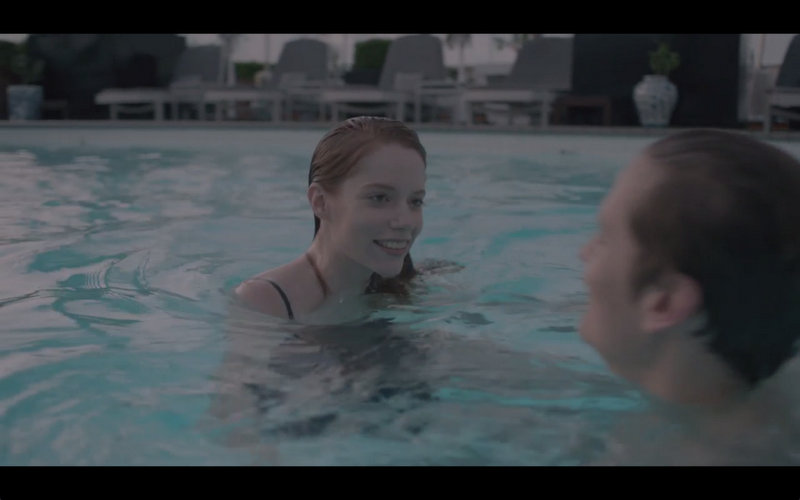
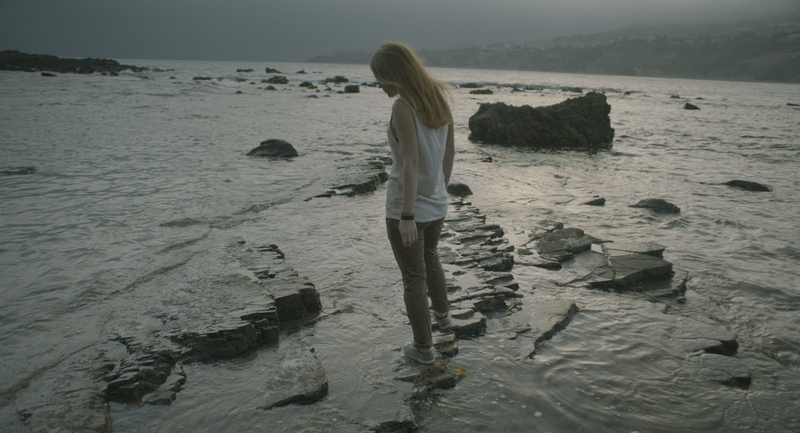

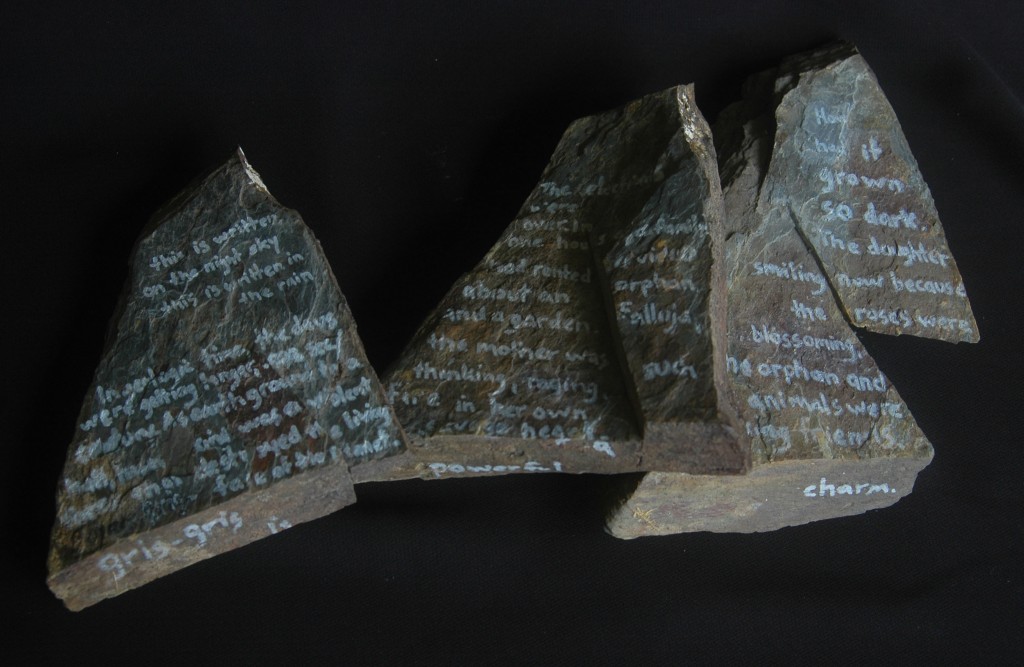
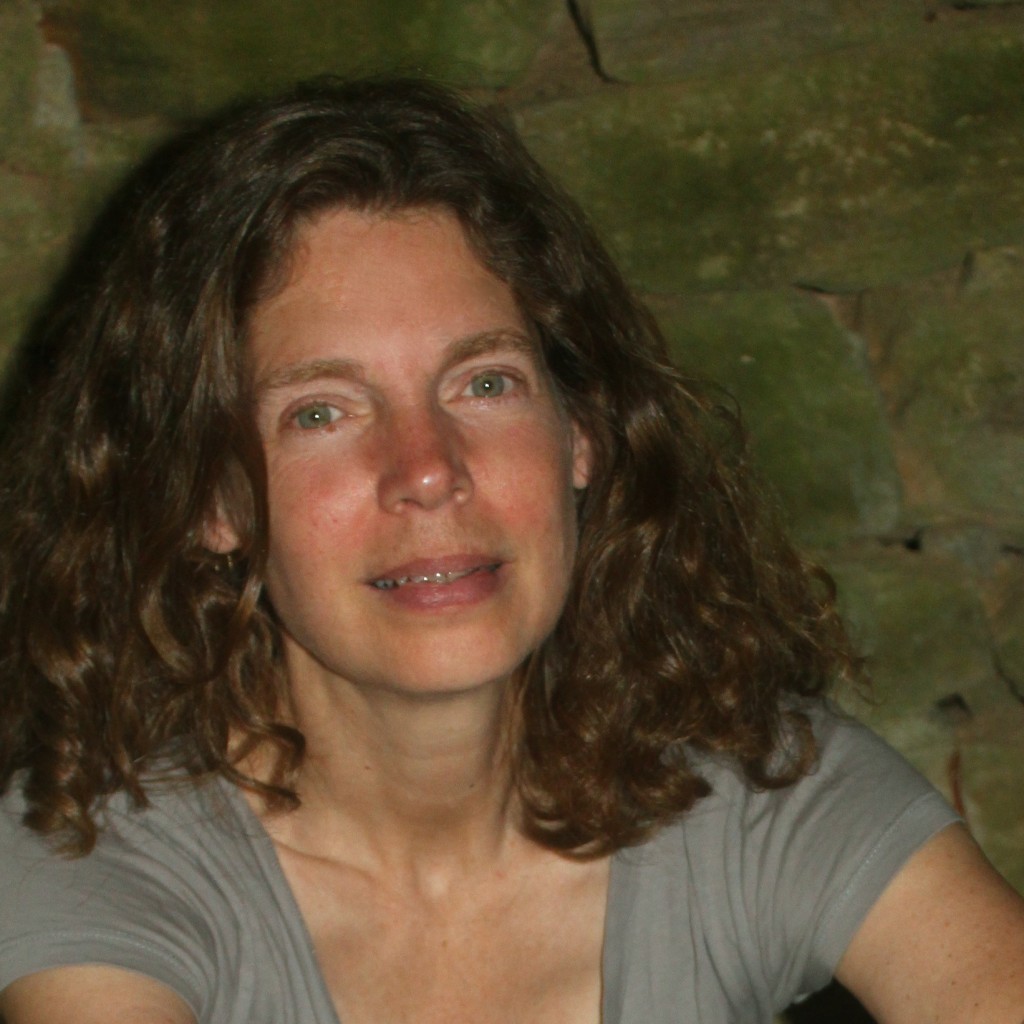
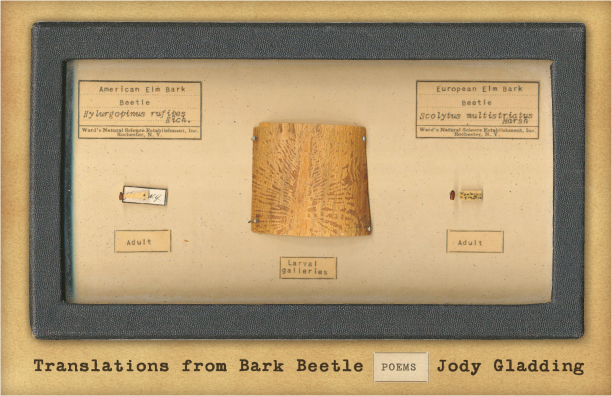
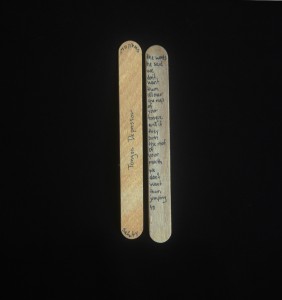
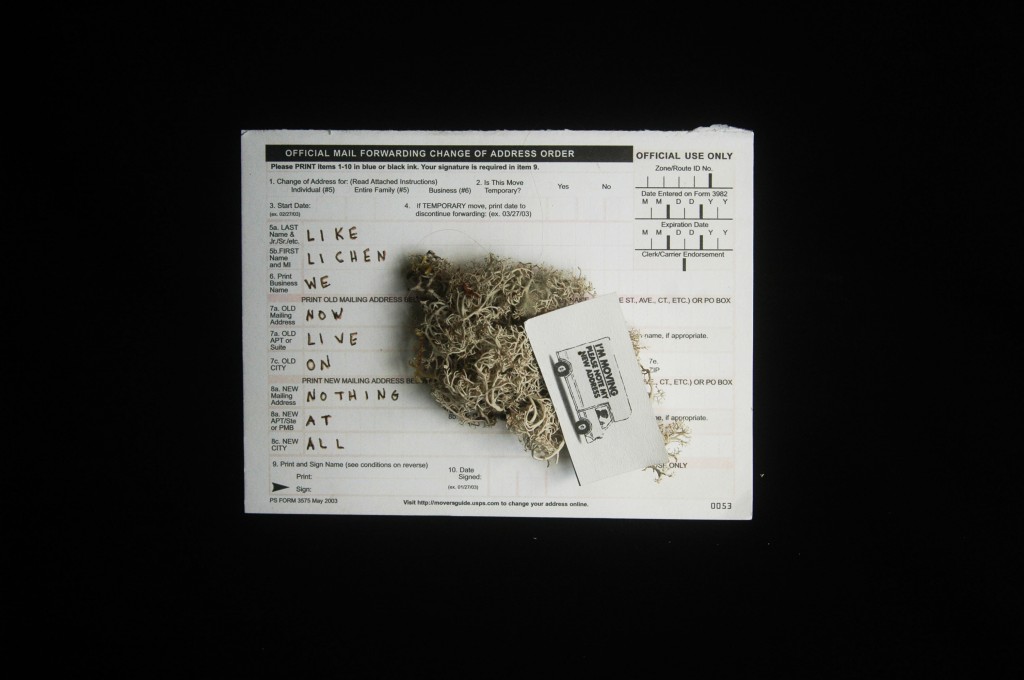
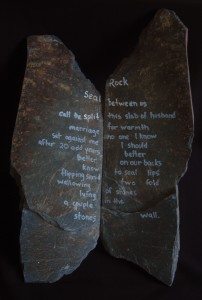
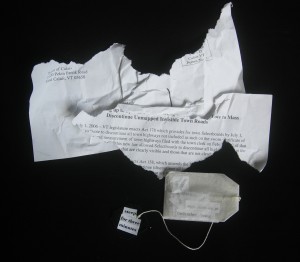 After the Vote to Mass Discontinue Unmapped Invisible Town Roads
After the Vote to Mass Discontinue Unmapped Invisible Town Roads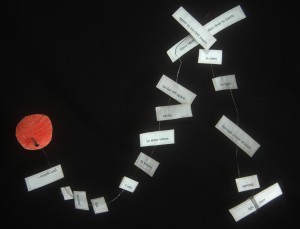 Since Mars won’t be this close to Earth again
Since Mars won’t be this close to Earth again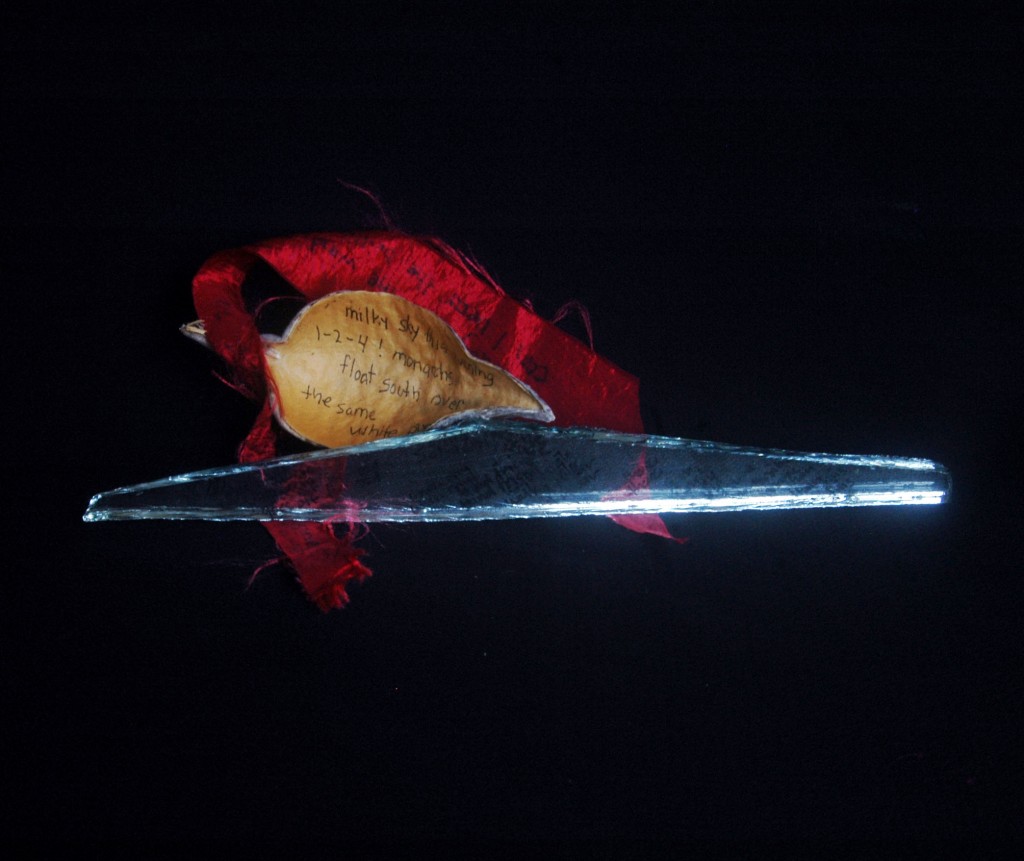
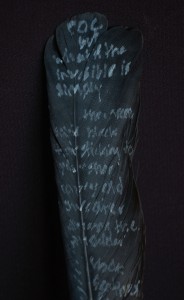 roc
roc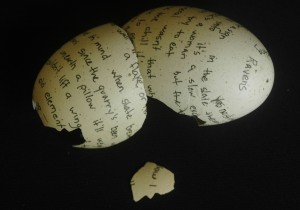 Nesting Ravens
Nesting Ravens
 11 Sentences
11 Sentences
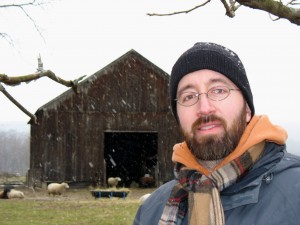
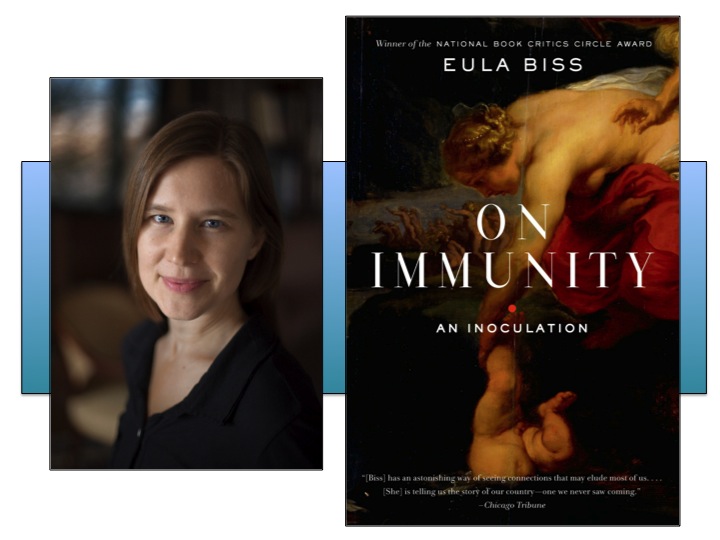





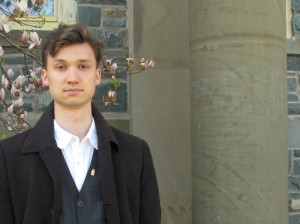
 Matthea Harvey
Matthea Harvey























